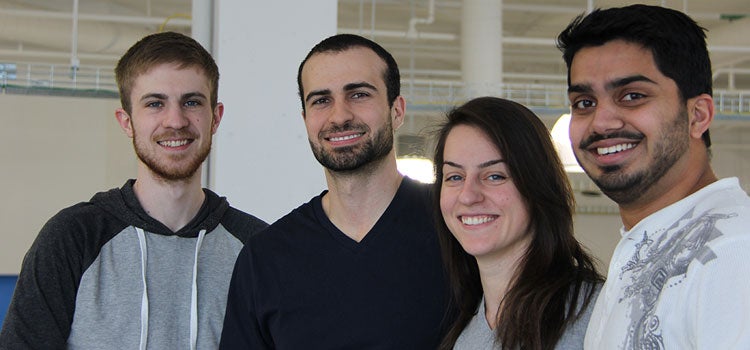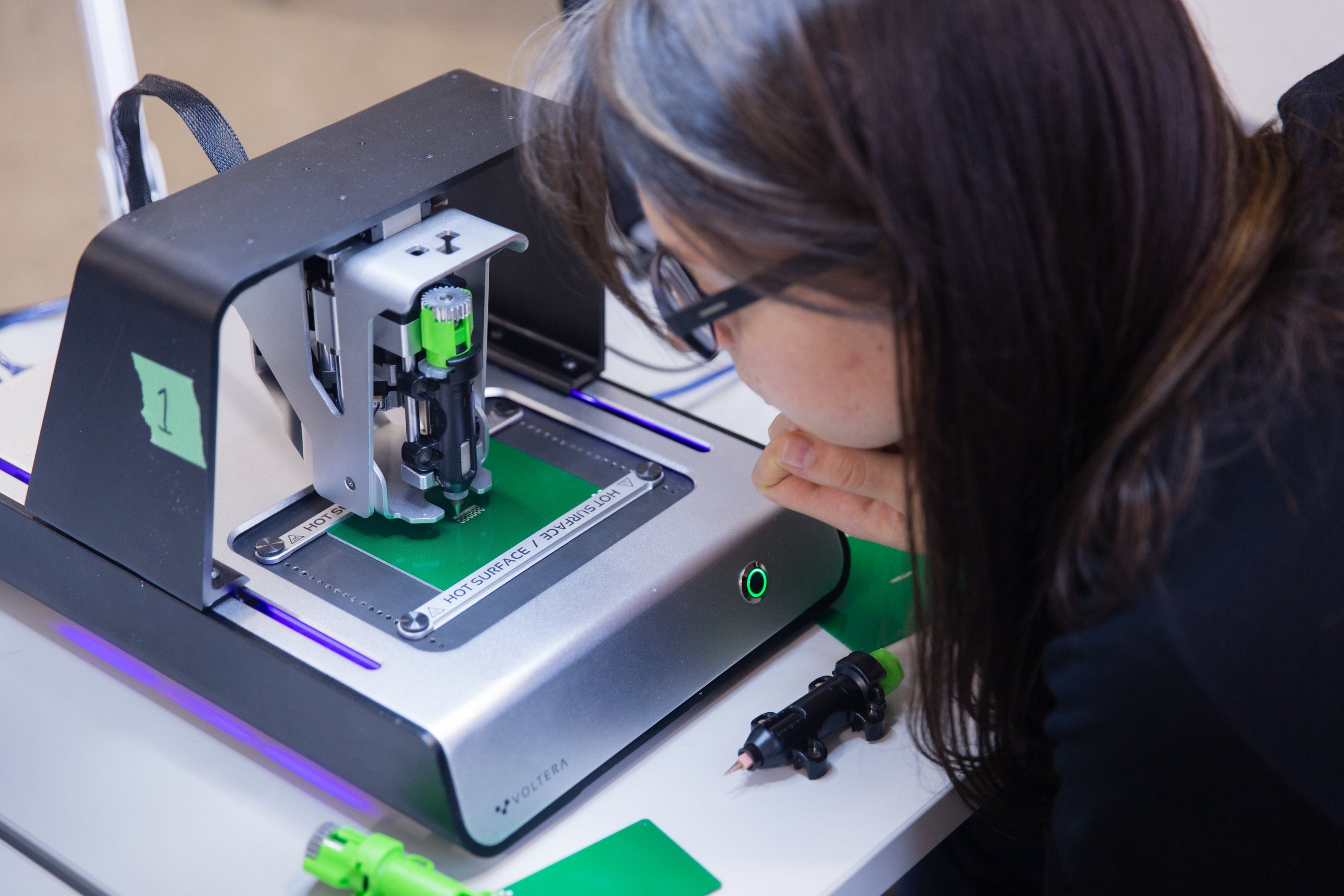Voltera V-One, a custom circuit board printer developed by Waterloo Engineering students, has taken top prize in the International James Dyson Award competition - beating out a record 710 entries from 20 countries.
Voltera is the first Canadian team to capture the prestigious award that comes with a prize of $60,000 (CAD) for the team and $10,000 for the University’s Faculty of Engineering.
“The Voltera V-One team is made up of four impressive young graduates. Their solution makes prototyping electronics easier and more accessible – particularly to students and small businesses. But it also has the potential to inspire many more budding engineers,” said James Dyson, a renowned British inventor whose foundation sponsors the award.
The
printer
was
created
by
Alroy
Almeida,
Katarina
Ilic,
James

After graduating in 2013, the team moved Voltera into the Velocity Garage, a University of Waterloo startup incubator. The team moved over to the Velocity Foundry when the University launched its hardware incubator in 2014.
“As a startup, the university's name has opened doors for us on the worldwide stage,” says co-founder Zozaya. “As students, we experienced different industries through the Waterloo co-op program and as employers, we have a constant supply of high-quality students who have proven invaluable to the development of the Voltera V-One."
Voltera printer named Top 10 innovation
While studying mechatronics engineering, Almeida, Zozaya, and Pickard became frustrated by the inefficiency of designing circuit boards. Teaming

The Voltera V-One printer pushes the boundaries of innovation,” said Pearl Sullivan, dean of Waterloo Engineering. “It is an excellent example of what our students are capable of when they graduate from Waterloo Engineering. They took a very complex problem and came up with an elegant solution that would change customized circuit printing forever. The future of technology innovation in Canada lies within brilliant teams like Voltera."
Waterloo team was runner-up last year
The James Dyson Award, launched by the James Dyson Foundation in 2007, is an international student design challenge open to university level students and recent graduates in the fields of product design, industrial design and engineering with the objective to design something that solves a problem.
Suncayr, a Waterloo nanotechnology engineering student startup, was the first runner up in the International James Dyson Award competition last year. Suncayr invented an easy-to-use marker that indicates when sunscreen needs to be reapplied. Also started as a Waterloo Engineering Capstone Design Project, it is now part of the University's Velocity Foundry and Velocity Science startup programs.